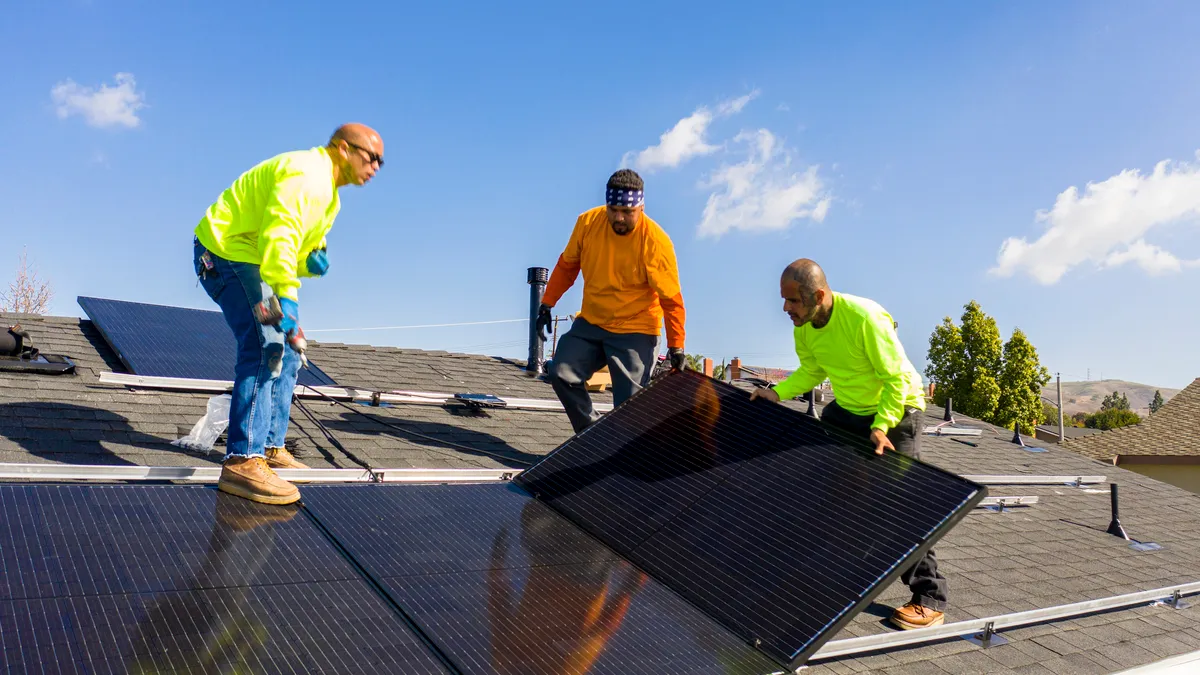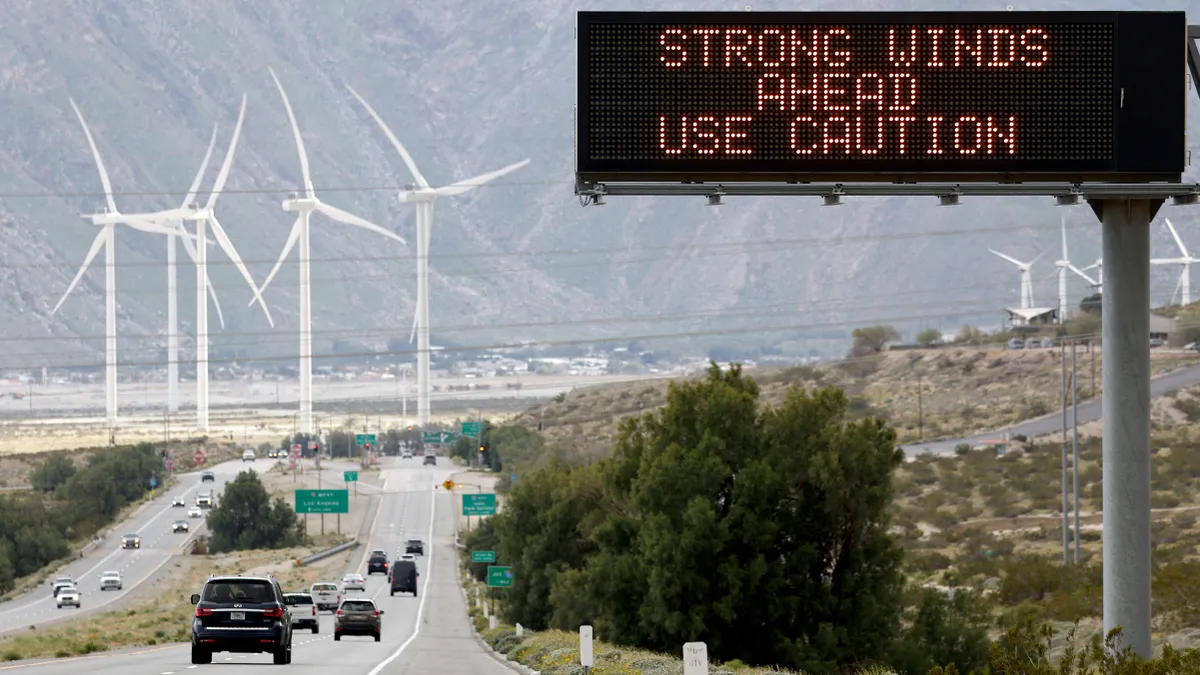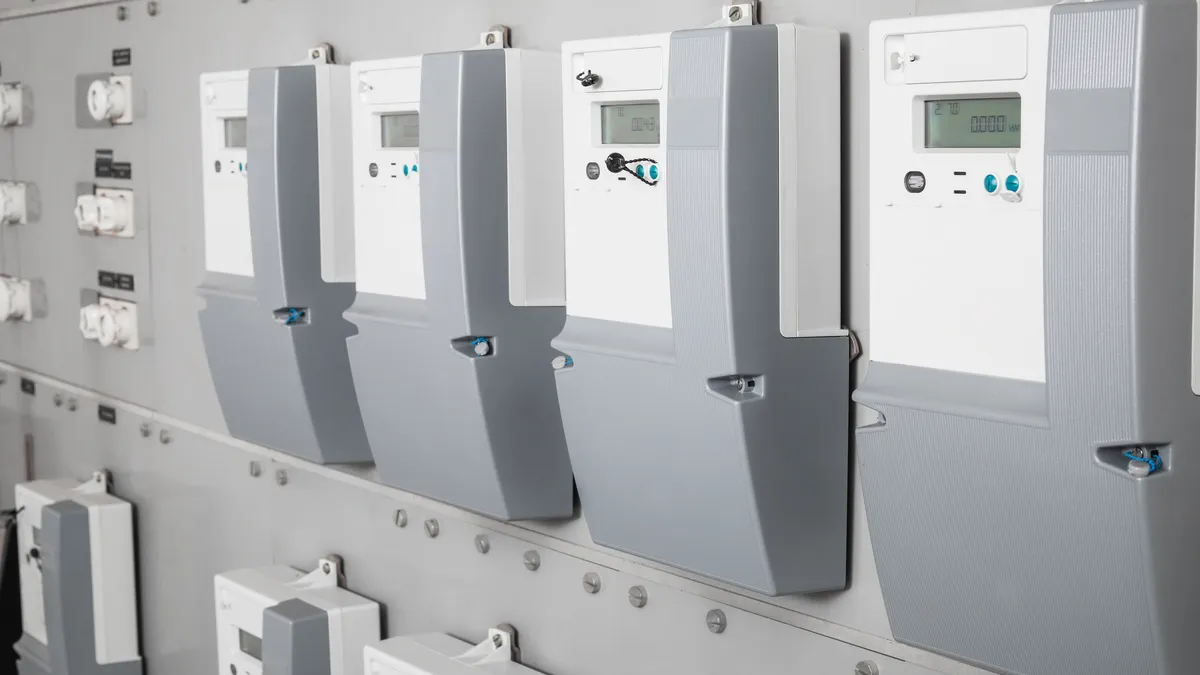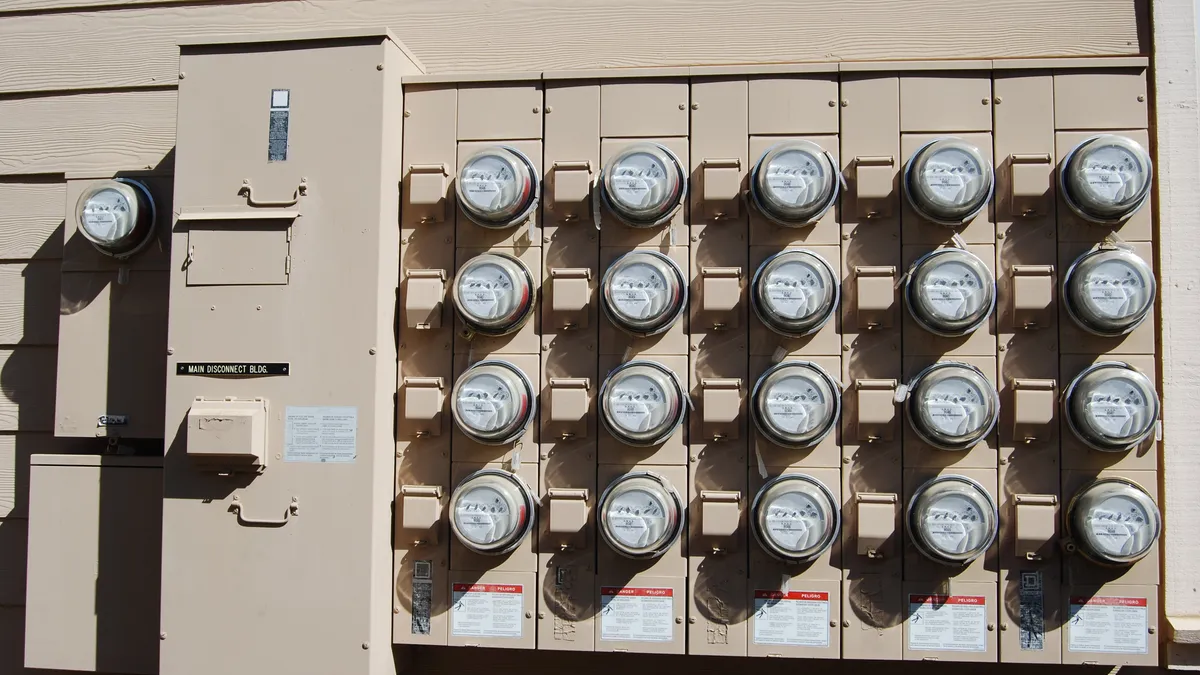To prepare California for a “high DER future” that could overstress the state’s distribution system, a series of regulatory workshops opened May 3.
Distribution system reform is needed as California moves from “firm dispatchable one-way generation to variable two-way generation” that will accelerate the impacts of distributed energy resources, a white paper introducing the California Public Utilities Commission stakeholder-led workshops reported. The paper offered potential distribution system operator, or DSO, models that could meet coming needs.
“By DSO or another name, a different model of the distribution utility is needed, because in the future every electricity user can have DER and participate in an open access distribution network,” Lorenzo Kristov, consultant for electric system policy, structure, and market design to climate and energy policy advocates, The Climate Center, told Utility Dive. But "right now, the need for a DSO is more concrete than the DSO concept," he added.
The workshops will develop “alternative roles and responsibilities of the distribution utility,” said Gridworks Executive Director Matthew Tisdale, who is leading the series of CPUC workshops. But those roles and responsibilities “are enormously financially and politically complicated” and “probably the most fundamental, contentious, and difficult issue in energy policy.”
Two insights about California’s distribution system work emerged from the May 3 workshop, though neither identified the state’s eventual DSO model. First, it was clear there is strong contention between some power system incumbents and community representatives on critical proceeding points, including who can participate and how to define a DSO. And second, it appears major regulatory reforms that could impact utilities' earnings, like performance-based regulation, are part of the discussion.
The numbers and the need
DERs are “distributed renewable generation resources, energy efficiency, energy storage, electric vehicles, and demand response technologies,” according to the California Public Utilities Code.
Though rooftop solar is currently threatened by a Commerce Department inquiry and California's net metering reconsideration, the state's DER growth will accelerate, workshop participants agreed. Customer demand, the state's zero emissions by 2045 goal, evolving technology, and falling prices will be key drivers, the white paper added.
California installed distributed solar photovoltaic capacity is expected to increase from 2022’s 14,048 MW to 24,721 MW in 2030, according to California Energy Commission spokesperson Michael Ward’s review of the commission’s 2021 Integrated Energy Policy Report. Distributed energy storage capacity is projected to increase from 2022’s 740 MW to 2,587 MW in 2030, he added.
California’s estimated 839,000 zero-emission vehicles at the end of 2021 are projected to reach 5.7 million light-duty passenger and medium- and heavy-duty vehicles by 2030, Ward added, citing CEC data. And an estimated 1.5 million households had smart thermostats in 2018, according to the commission’s 2019 Residential Appliance Saturation Study, though they were too few to count in its 2009 study.
Gov. Gavin Newsom’s, D, Executive Order N-79-20 targeting 100% zero-emission new passenger vehicle sales by 2035 is expected to drive exponential growth, the CPUC white paper said. Assembly Bill 327, a 2013 provision that protects customer-owned resources, programs supporting battery storage and heat pumps, and utility and private sector policy-led rebates and initiatives, will all add to accelerating DER growth, it added.
As DER penetration increases, the management of its integration into the distribution system is becoming increasingly important.
A DSO may be an entity responsible for planning and operations on a distribution system or one that operates and develops multi-faceted “networks,” the white paper said. Or it could be “a neutral facilitator of an open and accessible market” for DER, the paper added. Or it might be “the existing utility,” according to a 2015 paper co-authored by workshop participant Kristov.
Identifying distribution system reforms is essential to meeting the commission’s 2021 High DER Future Proceeding (R.21-06-017) order, CPUC Energy Division Senior Energy Analyst Rob Peterson told the May 3 workshop. The objective is to “guide public and private sector investment for a high DER future” while “integrating equity and access considerations," he said.
Reports on the May 3 and other workshops will go to the CPUC “as record evidence” in 2022 and 2023, with a final proposed commission decision on distribution system management scheduled in 2024, Gridworks' Tisdale reported. It also outlined key questions for participants and four “conceptual” new distribution system models.
In one model, “DER provide distribution services” to a wholesale market, the paper reported. In another, IOUs remain responsible for "overseeing” DER-provided services in a separate new distribution market, the paper said.
In the paper's third model, a new independent DSO provides grid services from DERs to “layered wholesale and distribution service markets,” and coordinates with the bulk system. A fourth “hybrid” option would have features of the other models, the paper said. A missing option is automated transactions independent of utility or DSO control, some workshop participants added.
Participants at future workshops will be asked to identify “legal, regulatory, procedural, technical and financial barriers” to proposals and regulatory or policy solutions for overcoming them, the paper said.
The commission ordered the workshops to “leverage the insights gained from Australia, the U.K. and New York, while creating the process and new ideas California needs,” the white paper said.
Experiences to learn from
Australia's 2017 "Roadmap" detailed goals, milestones and actions for a distribution system “transformation” through 2027, Mark Paterson, Australia-Pacific Managing Director for consultant Strategen, told the workshop. California should expect “TUNA” — a "Turbulent," "Uncertain," "Novel, Non-linear," and "Ambiguous" process of “ten solid years of transformation,” he warned.
The United Kingdom’s five-year “step-by-important-step” process had the advantage of utilities familiar with performance-based regulatory innovation, British consultant Jason Brogden told the workshop. From five scenarios, U.K. leaders selected coordinated procurement and dispatch between a new DSO and the bulk system operator. “Invest in stakeholder engagement” or risk losing “buy-in,” Brogden cautioned.
New York's incomplete efforts to create an independent distribution system operator, or IDSO, may be more instructive for California.
The Distributed System Platform, or DSP, proposed in New York's Reforming the Energy Vision proceeding is now part of the state’s Distributed System Implementation Planning, or DSIP, New York Department of Public Service spokesperson James Denn told Utility Dive. DSIP proceeding filings show the IOUs are implementing DSP functions described in REV, he said.
But the development of the DSP as a fully functioning IDSO remains incomplete.
New York’s DSIP effort has completed only limited distribution system reform and is still working on whether and how to separate operations and market functions, the white paper reported. The paper also asked what the lesson to be learned might be from the fact that Hawaii and California have higher DER penetrations without a reformed distribution system?
New York stakeholders found the most practical approach to distribution system management was to make IOUs responsible for their own operations and DER market services, Consolidated Edison Utility of the Future Group General Manager Steve Wemple emailed Utility Dive. That has allowed time to develop the DSP concept, though at high DER levels “it will need to be more robust and interactive,” he acknowledged.
REV’s original intent was a platform compensating utilities as DSP service providers for managing transactions, Regulatory Assistance Project President and CEO Richard Sedano recalled. “They would control less and earn revenues for enabling the DER marketplace.”
But other REV initiatives took priority, the platform was set aside, and the utilities “maintained control over the system while working through the DSIP process,” Sedano said. Through it, however, “the utilities have built non-wires solutions, community solar, and distribution technologies.” DER demand from California’s community choice aggregations may make it more “market-ready” for an IDSO to integrate DERs than New York was, he added.
New York’s distribution utilities leveraged their political control to take over REV’s DSP concept, but a DSO’s benefits for California will be “analogous to those from a regional wholesale market,” former FERC Chair Jon Wellinghoff, a longtime independent DSO advocate, told Utility Dive. “Competition at the distribution level can drive multiple layers of direct and transactional efficiencies with new market products and resources,” he said.
Complicating considerations
California likely faces a long conversation about distribution system reform because “difficult barriers and California’s typical incremental approach" may not satisfy all stakeholders, former CPUC President and longtime DER advocate Michael Picker said.
“We are moving to a future of two-way power flows and inverter-driven resources that will require investment in new distribution services,” Picker said. But New York found that only the utilities were willing take on managing the undefined distribution system infrastructure, operations, and market costs and responsibilities, he said.
A workshop report from distribution circuit technology provider Utilidata found significant spending will be necessary for hardware and software to manage and integrate high penetrations of DER, added Utilidata VP of State Policy and Regulatory Lauren Randall.
A different consideration that could impede progress toward a DSO is California’s inverse condemnation law, which holds IOUs responsible for any infrastructure involvement in wildfires, Picker said. Though workshop stakeholders may offer solutions to such barriers, a distribution operator could, like California’s utilities, be held responsible for distribution infrastructure involved in a wildfire, he said.
California utilities are rapidly investing in grid modernization to support reliability, customer needs, state policy and DER growth, Southern California Edison Senior Manager, Grid Modernization Policy, David Castle told the workshop. But a DSO facing the “inherent complexity of reconfiguring the distribution system” should face “upfront criteria and metrics” and a “detailed benefit-cost analysis” of effectiveness, he said.
The workshop had a “built-in bias” against an independent DSO, but the right market design can offer an alternative, transactive energy services provider TeMix CEO Edward Cazalet told the workshop. Small scale TeMix pilots have demonstrated “the technical feasibility” of a transactive market approach and two larger CPUC-initiated pilots are underway, he told Utility Dive.
The New York IOUs are demonstrating the DSO model that “will ultimately win" because "the utilities have the market power,” Kay Aikin, founder and chief product officer of microgrid developer Dynamic Grid, told Utility Dive. “There may not be enough money in the distribution system to support an independent DSO, utilities, and customers,” she said.
But the participation of local community leaders who see DERs as the solution instead of the problem is vital “because the future of the power system is through the customer,” Aikin added. In the near term, California’s cost of service regulation may impede distribution system reform, but “a new performance-based paradigm can eventually allow utilities to make money by saving money,” she said.
A legal consideration was raised by Coalition of California Utility Employees Attorney Rachael Koss. The California Public Utilities Code Section protects the utilities’ operation of their distribution systems, she told the workshop. Any proposal “that goes beyond the legal guardrails will have to convince the legislature,” she added, suggesting a new DSO model that compromises utility control would face challenges.
The important proceeding proposals began with “societal goals common to all communities” and worked backwards to distribution system reform that achieved those goals, Synergistic Solutions Principal Analyst Robert Perry told the workshop. The best was a “rethinking” of distribution system reform by The Climate Center’s Kristov, he said.
The community-based rethink
The existing distribution system model "is not adequate to a high DER future" and the utility revenue model that favors capital investments over DER integration "requires rethinking,” said Kristov, who helped design features of California's transmission system. The incumbent utilities, regulatory agencies and system operator have key roles in creating an interactive open access network “but their approach requires reshaping," he said.
“The conversation must shift from DER as a problem to DER as the key to the future,” Kristov added. “The heart of the issue is the utility’s incentive to overbuild infrastructure,” because DER can be “a reduced cost-alternative,” he said.
With regulation that compensates utilities for system services, their wires services can interconnect community-serving resources built by DER providers, he added.
Another key factor that requires rethinking is the commission's attitude toward many who could potentially be affected by decisions on distribution system management, advocates for customers and customer-owned resources said.
A too-technical approach to the workshops could limit stakeholder engagement, prevent “a stakeholder-informed record,” and “meet only the needs of incumbent utilities,” California Alliance for Community Energy Operations Director Erika Morgan warned the workshop on behalf of multiple community and environmental groups.
“The utilities, the distribution system, and its rules should serve the needs of the community, not the other way around,” California Alliance for Community Energy Coordinator Al Weinrub added. A community-led process would identify distribution reform objectives before picking a DSO model, he said.
DSO models, utility incentives and customer engagement are key parts of rethinking the distribution system, Kristov agreed. "After the objectives for the 2030 power system are clear, the DSO model to deliver them can be designed, and a new regulatory framework can make that DSO the centerpiece of a renewed, networked power system.”






















